Childhood Home Of Jesus May Have Been Found Underneath The Sisters Of Nazareth Convent
Ellen Lloyd - AncientPages.com - The search for the childhood home of Jesus started many years ago and now there is evidence suggesting it may have been found underneath the Sisters of Nazareth Convent in Nazareth, Israel.
Located in the city of Shefa-Amr, Israel, near the famous Church of the Annunciation there is the beautiful structure of the Sisters of Nazareth Convent. The Sisters of Nazareth Convent was established by nuns who arrived here from France in the mid-19th century.

Sisters of Nazareth Convent. Image credit: Trip Advisor
The monastery has expanded over the years. In 1860, a new school was built in the convent's area. Today the convent operates a school for deaf and blind children, a hostel for pilgrims, and a church. The church and the subterranean remains can be visited, but require an appointment.
Precious Ancient Artifacts Discovered Underneath The Sisters Of Nazareth Convent
During the process of the construction of the convent fascinating archaeological finds from the 1st and 2nd centuries, CE were discovered underground.

Many ancient artifacts were found underneath the Sisters Of Nazareth Convent. Image credit: Israel Antiquities Authority
In the 1880s, nuns, workmen, and schoolchildren accidentally discovered an ancient cistern. Further excavations revealed many well-preserved ancient artifacts, walls, and vaults from the Crusader period, a Byzantine cave-church, Roman-period tombs, and other rock-cut and built structures.
All archaeological discoveries this site was considered sacred in ancient times and the nuns made a small museum of the artifacts they had found.
Was This The Childhood Home Of Jesus?
In the article, “ Has Jesus’ Nazareth House Been Found? ” in the March/April 2015 issue of Biblical Archaeology Review, Ken Dark, the director of the Nazareth Archaeological Project explores the evidence that Jesus spent his formative years at the site.
Early attempts to investigate the importance of this archaeological site was made in 1936 by Jesuit Father Henri Senès, who never published the results of his findings.
In 2006, the Nazareth Archaeological Project began and professional archaeologists excavated the ancient site.
Ken Dark who has excavated in Nazareth and has a Ph.D. in archaeology and history from the University of Cambridge says all artifacts and ancient structures clearly indicate this place was inhabited by Jews a long time ago
In 2009, another first-century courtyard house was discovered nearby. The building is similar to the Sisters of Nazareth house, but it was built with fewer rock-cut components.
The discovery of two first-century courtyard houses from central Nazareth offers evidence of an Early Roman Jewish settlement that was quite large and most likely wealthy too.
Pilgrim Account Known As De Locus Sanctis Tells An Interesting Story
One could say there is no reason to believe this ancient site has any connection with Jesus, but there is one piece of evidence that makes the whole story very intriguing.
A seventh-century pilgrim account known as De Locus Sanctis, written by Irish monk Adomnán of Iona was presented to King Aldfrith of Northumbria in 698. It was based on an account by the Gaulish monk Arculf of his travels to the Holy Land.
De locis sanctis (Concerning sacred places) describes two large churches in the center of Nazareth.
According to Dar, "one is identifiable as the Church of the Annunciation, located just across the modern street from the Sisters of Nazareth Convent. The other stood nearby and was built over vaults that also contained a spring and the remains of two tombs, tumuli in Adomnán’s “Insular Latin.”
Between these two tombs, Adomnán tells us, was the house in which Jesus was raised. From this is derived the more recent name for the church that Adomnán describes: the Church of the Nutrition, that is, “the church of the upbringing of Christ,” the location of which has been lost.

A rock-cut doorway of the first-century house at the Sisters of Nazareth Convent. Was this the childhood home of Jesus? Image credit: Ken Dark
At the Sisters of Nazareth Convent, there was evidence of a large Byzantine church with a spring and two tombs in its crypt.
Both the tombs and the house were decorated with mosaics in the Byzantine period, suggesting that they were of special importance, and possibly venerated. Only here have we evidence for all the characteristics that De Locus Sanctis ascribes to the Church of the Nutrition, including the house.”
Whether this house is really the place where Jesus spent his time as a child, is not possible to say, but there is also no evidence that speaks against this possibility. What is clear is that ancient builders of the Byzantine church were convinced this was the childhood home of Jesus.
Written by - Ellen Lloyd – AncientPages.com
Copyright © AncientPages.com All rights reserved. This material may not be published, broadcast, rewritten or redistributed in whole or part without the express written permission of AncientPages.com
More From Ancient Pages
-
 Intriguing Discovery Could Offer Proof Of The Tabernacle – Has The Dwelling Place Of God Been Located?
Archaeology | Nov 9, 2013
Intriguing Discovery Could Offer Proof Of The Tabernacle – Has The Dwelling Place Of God Been Located?
Archaeology | Nov 9, 2013 -
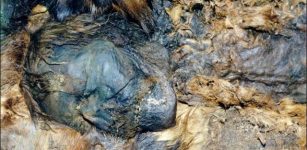 Discovered Near Arctic: Mysterious Lost Medieval Civilization And Puzzling Ancient Mummy
Archaeology | Jul 4, 2015
Discovered Near Arctic: Mysterious Lost Medieval Civilization And Puzzling Ancient Mummy
Archaeology | Jul 4, 2015 -
 Gnomes – Fantastic Supernatural Creatures Knowing Secrets Of Earth Mountains Rivers And Rocks
Myths & Legends | Nov 20, 2018
Gnomes – Fantastic Supernatural Creatures Knowing Secrets Of Earth Mountains Rivers And Rocks
Myths & Legends | Nov 20, 2018 -
 Is The Mystery Of Controversial Phaistos Disk Solved?
Archaeology | Dec 17, 2015
Is The Mystery Of Controversial Phaistos Disk Solved?
Archaeology | Dec 17, 2015 -
 Controversial Roman Emperor Heliogabalus Wanted To Be A Woman And Much More
Featured Stories | Jun 14, 2020
Controversial Roman Emperor Heliogabalus Wanted To Be A Woman And Much More
Featured Stories | Jun 14, 2020 -
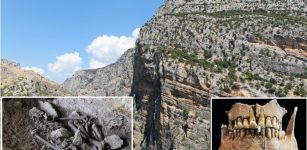 Unusual Neolithic Burial From Grotta Di Pietra Sant’ Angelo Puzzles Archaeologists
Featured Stories | Jan 15, 2024
Unusual Neolithic Burial From Grotta Di Pietra Sant’ Angelo Puzzles Archaeologists
Featured Stories | Jan 15, 2024 -
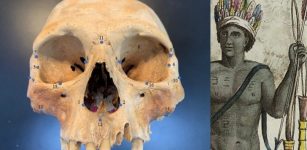 3D Facial Landmarks Reveal Columbus’ Cannibal Claims Were No Myths But True Accounts
Archaeology | Jan 15, 2020
3D Facial Landmarks Reveal Columbus’ Cannibal Claims Were No Myths But True Accounts
Archaeology | Jan 15, 2020 -
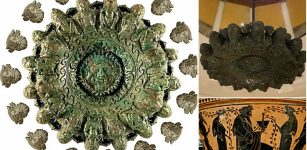 Etruscan Beautiful Bronze Lamp of Cortona – Studied
Artifacts | Apr 10, 2024
Etruscan Beautiful Bronze Lamp of Cortona – Studied
Artifacts | Apr 10, 2024 -
 Controversial Ancient Book Of Veles Remains An Unexplained Mystery
Artifacts | Sep 28, 2015
Controversial Ancient Book Of Veles Remains An Unexplained Mystery
Artifacts | Sep 28, 2015 -
 Young Boy Finds Unique Micro-Mosaic Cross Medallion In Jerusalem
Archaeology | Jan 3, 2025
Young Boy Finds Unique Micro-Mosaic Cross Medallion In Jerusalem
Archaeology | Jan 3, 2025 -
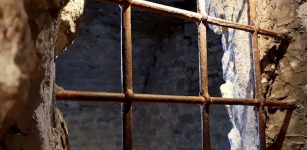 New Study Sheds Light On The Phenomenon Of Female Jewish Slavery And Uncovers Gang Rape In Livorno’s Slave Prison
Archaeology | May 18, 2022
New Study Sheds Light On The Phenomenon Of Female Jewish Slavery And Uncovers Gang Rape In Livorno’s Slave Prison
Archaeology | May 18, 2022 -
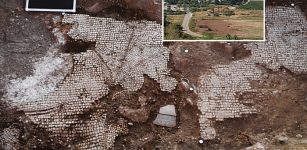 Ancient Colorful Nile-Scene Mosaics, Plastered Walls, Water Cistern Unearthed On The Shore Of The Sea Of Galilee
Archaeology | Sep 27, 2022
Ancient Colorful Nile-Scene Mosaics, Plastered Walls, Water Cistern Unearthed On The Shore Of The Sea Of Galilee
Archaeology | Sep 27, 2022 -
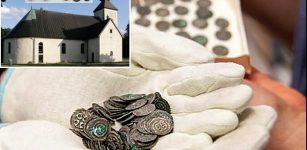 Trove Of Coins Dating Back To The 1100s Found On Visingsö, Sweden
Archaeology | Apr 8, 2024
Trove Of Coins Dating Back To The 1100s Found On Visingsö, Sweden
Archaeology | Apr 8, 2024 -
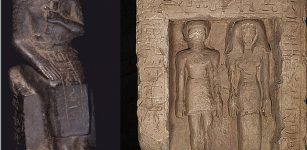 Excavation At Tell Edfu Reveals Early New Kingdom Complex
Archaeology | Jan 10, 2019
Excavation At Tell Edfu Reveals Early New Kingdom Complex
Archaeology | Jan 10, 2019 -
 Unique Ancient Roman Boxing Gloves Discovered Near Hadrian’s Wall – The Only Surviving Example From 120 A.D.
Archaeology | Feb 20, 2018
Unique Ancient Roman Boxing Gloves Discovered Near Hadrian’s Wall – The Only Surviving Example From 120 A.D.
Archaeology | Feb 20, 2018 -
 Forbidden Ancient Manuscripts Almost Erased From History – Secret Teachings Of Mysterious Founder – Part 1
Ancient Mysteries | May 10, 2018
Forbidden Ancient Manuscripts Almost Erased From History – Secret Teachings Of Mysterious Founder – Part 1
Ancient Mysteries | May 10, 2018 -
 Unexplained Mysteries Of The Superstition Mountains – A Gateway To Other Worlds?
Featured Stories | Dec 15, 2020
Unexplained Mysteries Of The Superstition Mountains – A Gateway To Other Worlds?
Featured Stories | Dec 15, 2020 -
 Wars Of The Roses: Thirty Two Years Of Struggle To Claim English Throne
Featured Stories | Aug 5, 2017
Wars Of The Roses: Thirty Two Years Of Struggle To Claim English Throne
Featured Stories | Aug 5, 2017 -
 How Far South Did Prehistoric Highly Skilled Polynesian Seafarers Sail?
Archaeology | Nov 1, 2024
How Far South Did Prehistoric Highly Skilled Polynesian Seafarers Sail?
Archaeology | Nov 1, 2024 -
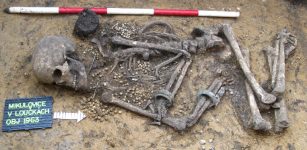 Central European Prehistory Was Highly Dynamic – New Study Shows
Archaeology | Aug 27, 2021
Central European Prehistory Was Highly Dynamic – New Study Shows
Archaeology | Aug 27, 2021
